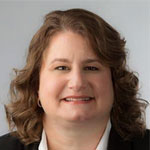What Happens After the COVID-19 Public Health Emergency Ends?
Susan Maupin
2/23/2023
Under the public health emergency (PHE), the Centers for Medicare & Medicaid Services (CMS) exercised emergency powers to allow for flexibilities to health care providers caring for patients related to SARS-Cov-2.1 There are currently a number of waivers that provide significant benefits to skilled nursing facilities (SNFs) and their acute care referring sources, attempting to free up much needed critical care beds.
Most importantly is the three-day acute care prior hospitalization. If this waiver has been relied upon by facilities, returning to a pre-COVID-19 referral process will be difficult for both referral sources and SNFs alike. Facilities should begin to prepare for return to pre-waiver practices to ease back into those requirements without benefit of the waiver. For those that have not utilized this waiver, transition will be easier.
Currently, the following waivers are still in place to allow for necessary flexibilities for those impacted by COVID-19:
- Three-day acute care hospitalization prior to SNF stay
- Preadmission Screening and Annual Resident Review (PASSR) 30-day suspension of assessment
- Data related to PHE extended until 12/31/2024
- Timeliness for submission of Medicare appeals with good cause
- Resident rooms and grouping for cohorting for illnesses
- Placement of alcohol-based hand hub dispensers
- Testing of staff and residents for SARS-CoV-2
SNFs should have already initiated discussions to evaluate what, if any, waivers are still being relied upon, and what that will look like once PHE ends.
The first step is taking inventory on where a particular facility stands. Understanding the baseline will allow for discussions as to what operational changes may be needed moving forward. The impact to some organizations may be minimal, while others may be placing greater reliance upon these flexibilities.
Additionally, most facilities are continuing to evaluate and assess staff shortages that have been a result of burnout, the need for more staff than are currently available per bed, and general limited staff inventory. The development of a strategy to demonstrate why a facility is the right organization for potential new staff will be critical moving forward. This is not an easy task when supply and demand are causing increasing financial strain on many facilities, but it’s an important step in ensuring adequate resources.
Reviewing current marketing and referral practices is also a necessary step as the PHE ends. For example, during the PHE, some organizations have required negative COVID-19 testing prior to admission or return from an acute care stay, resulting in reduced bed availability due to staff shortages.
If a facility has created barriers to admission, whether warranted or not, it may be difficult to regain market share once additional beds are open and patients are in need of long-term care placement. Regaining market share due to changes in admission practices may be difficult, but not unachievable. A number of factors will fall into play including community reputation prior to the changes under the PHE, CMS star rating, services provided, and the ability to take certain payer sources. Discussions should be ongoing to establish a clear plan for how each facility will reemerge at the end of the PHE.
Continued Need for this Important Venue of Care
Many facilities did not survive the COVID-19 PHE, which left a significant number of residents in need of placement. According to an article by AHCA/NCAL in April 2022, there had already been 327 nursing home closures throughout the pandemic with another 400 anticipated to close in 2022.2 If this current trend of facility closures continues, it begs the question: Who will care for the elderly population?
For many families, there are limited means to provide the financial care and/or physical support needed for 24-hour care. Current challenges coupled with potential negative financial adjustments from government payers creates a dark cloud over many facilities and threatens the ability to care for the vulnerable patient population. Also, in the event there is another spike in the PHE or there is another pandemic in the future, skilled nursing facilities will be a much-needed resource for the healthcare community. How will the healthcare community meet the needs of all patients and residents if skilled nursing facilities close due to operational challenges largely out of their control?
 To remain open and financially viable, continued support will be needed from government payers to support this venue of care. While short-term support continues from Medicare, looming adjustments over the next two years have the potential to create significant additional challenges to viable operations. While the future is largely unknown, one thing we know for sure is that there is a demonstrable need for this venue of care.
To remain open and financially viable, continued support will be needed from government payers to support this venue of care. While short-term support continues from Medicare, looming adjustments over the next two years have the potential to create significant additional challenges to viable operations. While the future is largely unknown, one thing we know for sure is that there is a demonstrable need for this venue of care.
Susan Maupin, J.D., is a vice president at Advis. Prior to Advis,
she served as a registered nurse at St. Anthony Medical Center, Crown
Point, Indiana.
References
1. Centers for Medicare and Medicaid Services, Long Term Care Facilities (Skilled Nursing Facilities and/or Nursing Facilities): CMS Flexibilities to Fight COVID-19.
2. American Health Care Association National Center for Assisted Living, Nursing Home Closures: By the Numbers, April 2022